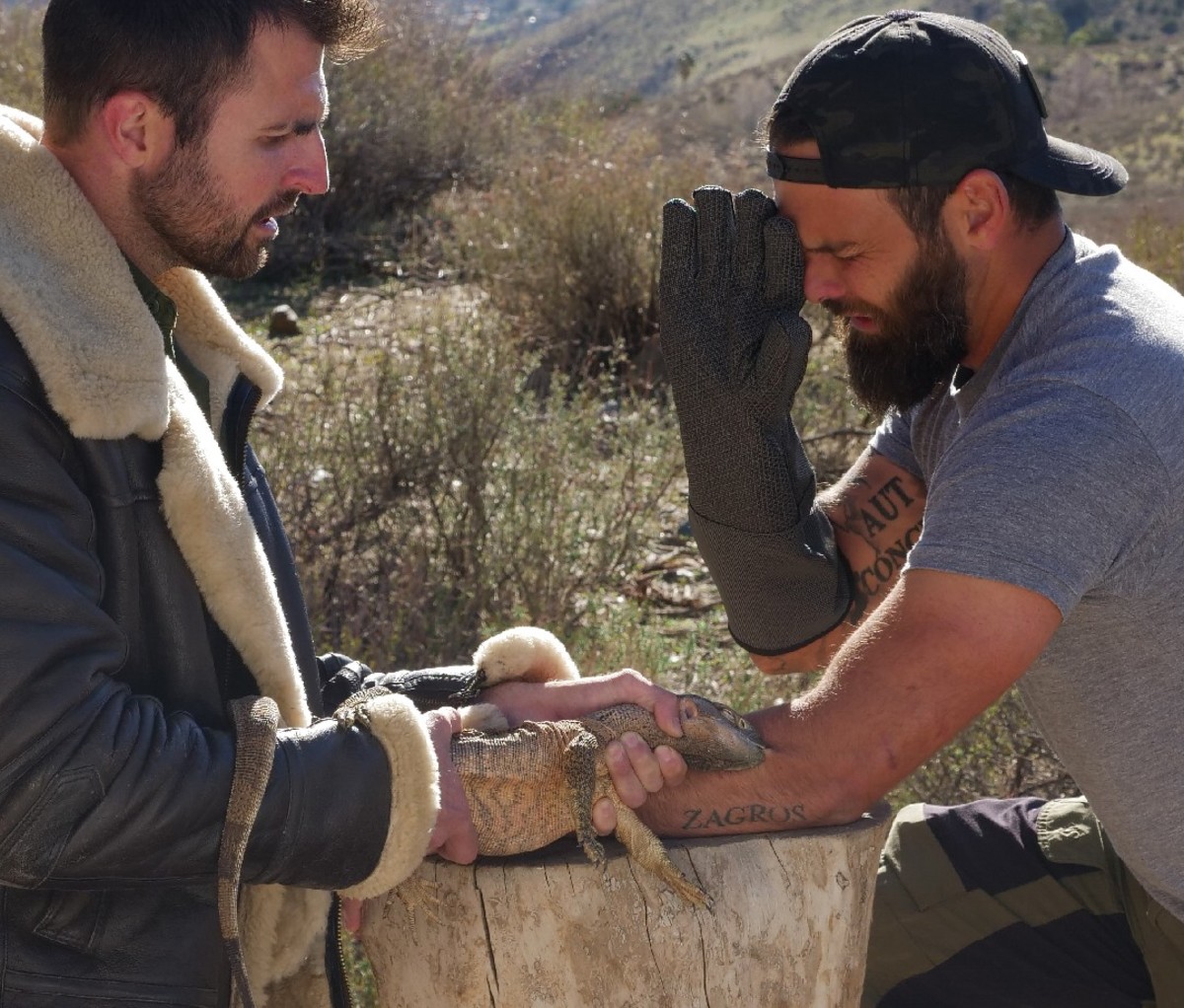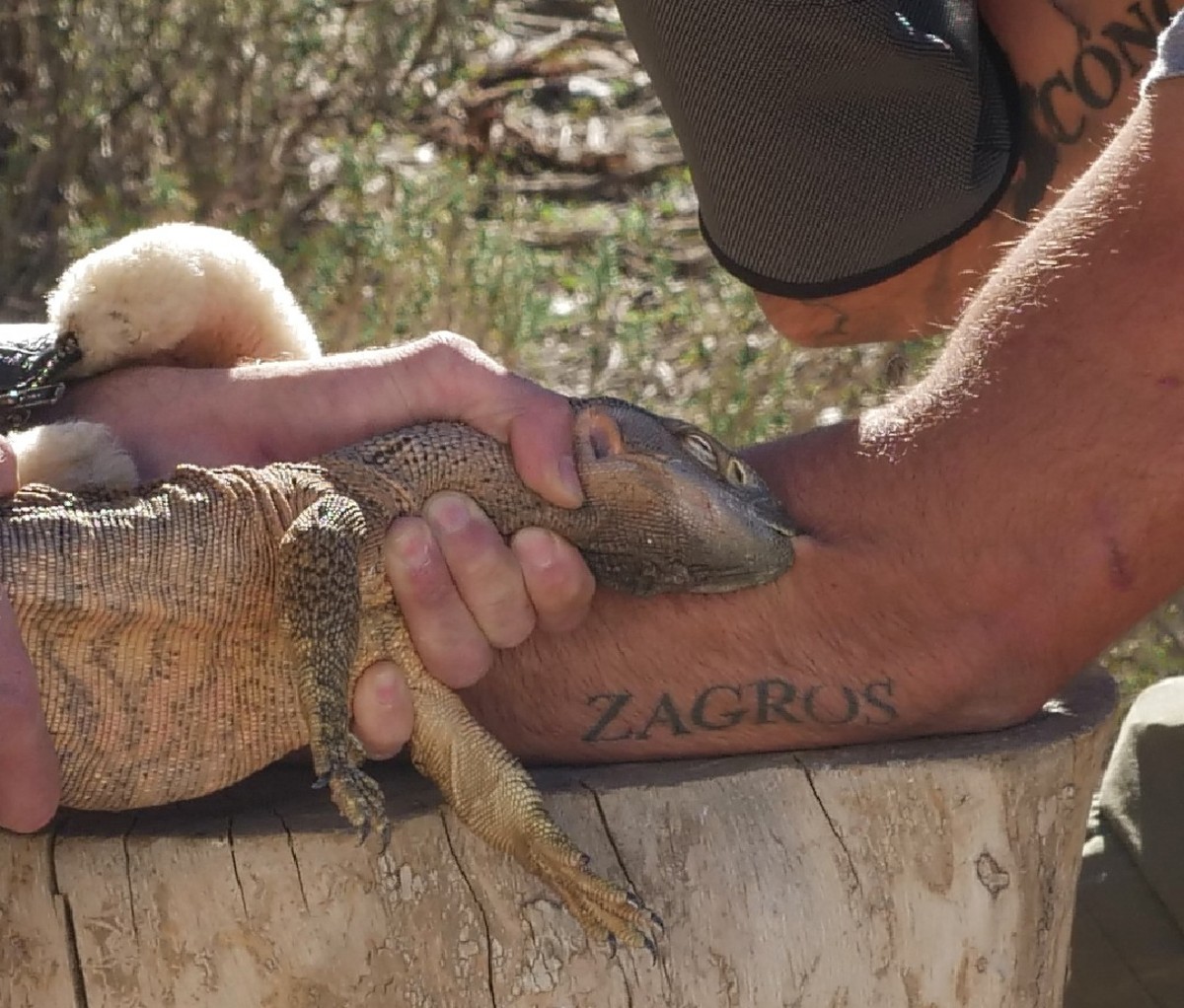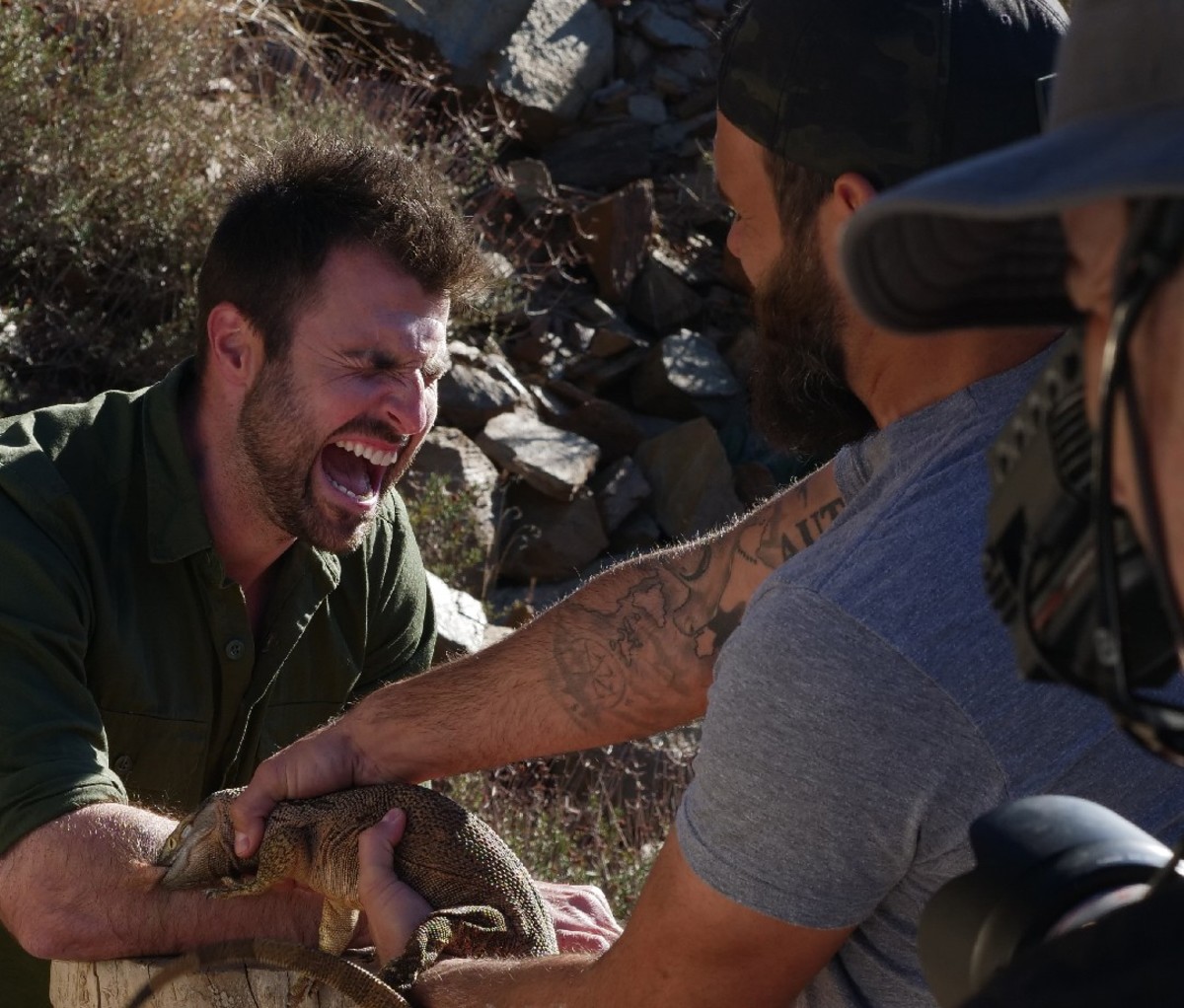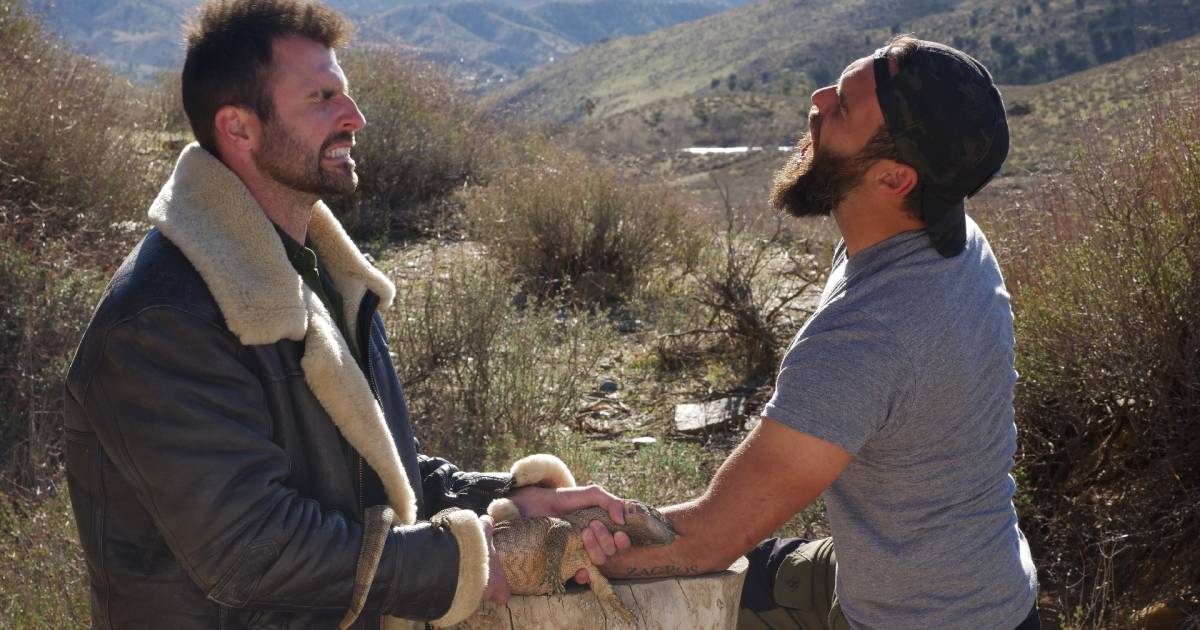No products in the cart.
Fitness Tips
‘Kings of Pain’ Hosts Voluntarily Get Attacked by Dangerous Animals
During most nature programs, an encounter with a deadly animal is the climax, where the host cautiously circles, gets the shot, explains from afar, then gets the heck out of there. Kings of Pain on The History Channel is different. Instead, wildlife biologist Adam Thorn and animal handler Rob “Caveman” Alleva take turns getting voluntarily bitten or stung before moving on to find the next dangerous creature. For some, this could be considered nightmare fuel—spending quality time in close quarters with scorpions, spiders, and feared reptiles. Basically, it’s all climax.
Despite outward appearances, Kings of Pain is in pursuit of science—with the hosts building on entomologist Dr. Justin O. Schmidt’s Pain Index. First developed in 1983, the pain index was started as a scale to rank the pain associated with insect strikes on a scale from one to four. Thorn and Alleva are advancing that work into new species, as well as adding video documentation of the attack and aftermath to the findings. The first season took the pair from Bolivia to South Africa in search of dangerous encounters. For the second season, the agonizing action was brought to them on a contained set in Southern California.
Men’s Journal sat down with the two hosts of Kings of Pain to discuss what drew them to the show, the most painful bites, selecting the animals, and the most shocking moments from filming the show.

Men’s Journal: How did you guys end up with this gig? There aren’t many job offerings centered around animal attacks—let alone takers.
Rob “Caveman” Alleva: I was fascinated with animals and had a few projects that I lucked into. One of my first gigs in television was for a documentary where they needed footage of someone getting bitten by nonvenomous snakes on high-speed film. I don’t know why, but that sounded cool to me—and I did it. So you could say that I had a little experience. The idea of a pain-ranking television show had been floating around for years. History had this project where they wanted to expand the pain index that Justin Schmidt, a famous entomologist, started. I have to say with the liability and danger involved in a project like this, I can’t believe that any network actually went forward with it. They said they picked me as one of the cohosts because I seemed like a fun travel companion and looked like I didn’t mind being bitten by creatures.
Adam Thorn: I’ve been obsessed with animals my entire life and worked on a few documentaries. I was contacted by the network who said they liked me for one of their shows and wanted to fly me to Los Angeles to do a chemistry test with a few guys. I thought it was going to be a typical animal series, and it wasn’t until I was there that they told me I was going to be getting bitten by animals. I was actually game for it. To be honest, I’m always getting bitten and stung by animals anyway, so it wasn’t exactly new territory. That’s something that Caveman and I found out that we had in common—that we would let these animals bite us out in the field out of morbid curiosity. This show gave us an opportunity to satisfy that curiosity, but also bring science and documentation into the equation.
So tell me about how you decided on what animals to get bitten by in the first season?
RA: There was a preliminary list from the producers when Adam and I first signed on. The first animal on the list was the fer-de-lance which is a highly venomous pit viper. We looked at each other and laughed, because it was clear that they weren’t pulling any punches. We were like, “Are these guys going to kill us?”
AT: Getting bitten by the fer-de-lance would have been a combination season premiere and season finale!
RA: There were a lot of animals that we wanted to put on ourselves as well. There was a pretty thorough vetting process. Once we aligned on a species, it had to be okayed by the network, cleared by a doctor, and vetted by the insurance.

What animal were you most apprehensive about going into filming—and which one ended up being the worst in the moment?
RA: I’m not a big fan of centipedes, and we picked a doozy of a centipede in the first season—the Asian Giant Centipede. That was filmed toward the end of the first season, and by that time I think we felt like we knew what to expect. But it ended up wrecking us for 12 hours straight. There was vomiting and the worst pain of our lives. It was to the point where I started to question whether the pain index was worth it.
AT: I have had a longtime fear of tarantulas. I love all animals, but have always had a thing with spiders. In the third grade, when I was reading an animal book and turned to a spider section, no joke, right when I flipped open to that page a gigantic wolf spider crawled onto my hand. In that moment, fear was burned into my brain. I remember when I first saw a tarantula on the list for the first season of the show. I was worried about it, but tried to put it out of my thoughts. On the day, it was just as horrifying to me as I’d feared. It was traumatic to me both physically and mentally. I actually wasn’t as worried about getting bitten by it as simply handling it. So the worst part of that segment for me wasn’t the pain, but when I had to put the tarantula on Caveman so he could get bitten.
I’m glad you’re both still standing here. Has there been any lasting damage done from these bites?
RA: There was no question that a reticulated python bite was going to be rough, but I don’t think we knew how bad it was going to be. The first python we caught was eight feet long. We let it go in order to get a bigger one. The one we found next was a 16-footer, and we believe it was a male—which have serrated teeth. That wasn’t ideal, but it was the snake that we had. We were wearing facial protection and groin protection, everything that we could think of. The python got a lucky hit on my ulnar nerve, which is the largest unprotected nerve in your body. It’s located right where your “funny bone” is—and it felt like I’d hit it times a thousand, and the feeling didn’t go away for weeks. I’m still dealing with the fallout of that strike to this day. I had to have surgery and a lot of physical therapy. I have a lot of weakness in that hand and a lack of coordination. I still drop things a lot, and this is three years later. All I can say is, it could have been worse, but it was still a reality check. Going into the second season we really stressed that we needed to do everything we could to avoid permanent damage to our bodies—like the sort I’m still dealing with from that python bite.

When did you guys find out that a second season was in the works—and how’d you feel about it?
RA: I was still at the beginning of dealing with my injury at that time, scheduling surgeries and deadlines with insurance. But ultimately this has been a passion project for us, so it didn’t take too long for us to decide to do another one. Preproduction on the second season began immediately and it was going to be on the road again—but we ended up having to shut that plan down because of the pandemic. It was heartbreaking. We didn’t know what was going to happen with the show. Then a few months ago, Adam got an email about doing the show on a contained lot in Los Angeles. I didn’t get the email at the same time. To be honest, at the beginning I didn’t know if I was still included. I was like, “Does this mean I’m out of the show?” But eventually they got in touch with me too.
AT: Since we had to step back in 2020, we thought this chapter of our lives and this series was dead in the water. The email I got was pretty presumptuous. It didn’t ask if I was interested in doing the show again, it just said we were filming and I needed to sign these papers. But it was a very welcome message, because every other production in the world was shut down. The show flew us out to Los Angeles, kept us outside and distanced, and brought the animals to us. It was a pretty seamless operation. Plus we had a medical team close, so we were able to explore more deadly animals.
What sort of deadly animal are you especially glad to take on with medical personnel at close hand?
RA: Our favorite animal in the second season is one that we wanted to do in the first season, but the network was originally against it because of the danger element. This season we were able to get shocked by an electric eel. It took us almost an entire season to get one to us. Originally we were expecting to get one that was maybe two feet long. The one we ended up getting was four feet. They have cells that are basically millions of tiny batteries that all come on together. There were a lot of questions, like if we should have it shock us outside of the water or in the water. There was also a lot of confusion on what part of the body should be touching the eel. What we discovered is that on land they’re more dangerous. We didn’t really know much about it. We just wanted to get shocked and hopefully not die.
AT: The fact is, it was a very new experience. You don’t know how your heart is going to respond to something like this. I’ve been shocked by electrical outlets at home, but that isn’t really a reference point. Again, because we filmed this season all in one location, instead of out in the field like the first season, we were able to have more medical support around. That gave us a lot more confidence, having all of Dr. Ben Abo’s equipment so close. That helped us push the limits more than we did in the last season. There were a lot of animals that we did during the second season that have killed people—and the electric eel is one of them. Feeling the power of an electric eel is mind-blowing. Caveman and I actually wanted to go back for seconds.
Was there an animal that hit you harder than the rest?
RA: The Orange Baboon Tarantula was one of the worst. We could hardly do anything for a few days after we were bit. There was extreme weakness all over the body. People will be able to see all of that.
AT: Doing the OBT this season pretty much brought back my fear of spiders, which I thought I’d kicked after last season.
Beyond adding entries to the pain index and creating entertainment, is there a deeper purpose for a program like this?
RA: I was bitten in 2011 by a Southern Pacific Rattlesnake. I wasn’t that worried at first, knowing that it’s survivable. I was photographing one, and like an idiot got bitten. A few minutes later, my blood pressure was crashing and I was losing the ability to use my legs. I was also losing the ability to speak and darkness was closing in around my eyes. I started to think I might be one of the rare cases where someone does die from that bite—and two people did actually die that year from that species, so it’s not unheard of. I was looking down at my shoulders and my muscles and there was movement. It looked like there were snakes underneath my skin. It was terrifying to see. But because I’d worked on programs that covered snakebites, I knew it was fasciculations. The fact that my body was responding like that, and I knew what was happening, gave me comfort. That kind of knowledge is great to have in those scenarios, so we’re hopeful that along with helping the pain index people are also learning about the effects these attacks can have.
AT: I get a lot of messages from people who say that they are into animals now because of the show. It didn’t scare them off of these creatures at all. There are a lot of us who were drawn into the animal world by sharks and dinosaurs, the powerful or violent ones, and from there the interest deepens. Let’s be honest, they are cool and impressive. If that brings them to do more research and stoke curiosity, we’ve done our jobs. I think people will also see that in a lot of cases, these animals were hesitant to bite or sting us. It’s not like they were just jumping at the chance to cause harm. It’s only when they perceived a real threat when we were handling them a certain way.
RA: Our biggest fear going into this show was that we were going to scare people away from nature and animals—because we’re showing these dangers out there. Thankfully, it’s had the opposite effect. I hear from a lot of parents who say that their kids want to be biologists after seeing our show.
Kings of Pain airs on The History Channel.
For access to exclusive gear videos, celebrity interviews, and more, subscribe on YouTube!
Source link

